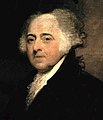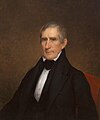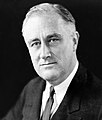User:Jondel/Presidents
Template:Politics of PhilippinesThe President of the Philippines is the head of state and government of the Republic of the Philippines. The President of the Philippines is locally termed as Ang Pangulo or Pangulo. For example, Ang Pangulong Gloria Macapagal-Arroyo for the current president. A person becomes a president by election. The president serves a term of six years.
=======================================================================
editElection
editDuly-registered voters directly elect the president by plurality vote; the election is held on the second Monday of May. In cases when two or more candidates have an equal number of votes, Congress, voting separately, shall choose one of them via a majority vote.
In case of disputes, the Supreme Court, sitting en banc, shall be the sole judge of all contests relating to the election, returns, and qualifications of the President.
Term
editThe president serves a term of six years and may no longer run for re-election, unless he/she becomes president through constitutional succession and has served for no more than four years as president.
Powers
editThe president heads the Executive branch of the government, which includes the Cabinet and all executive departments. The executive power, as such, is vested on the President alone.
The president is also the Commander-in-Chief of the Armed Forces of the Philippines. As Commander-in-Chief, the President can may call out such armed forces to prevent or suppress lawless violence, invasion or rebellion. In case of invasion or rebellion, when the public safety requires it, he may, for a period not exceeding sixty days, suspend the privilege of the writ of habeas corpus or place the Philippines or any part thereof under martial law.
The president may grant reprieves, commutations, and pardons, and remit fines and forfeitures, after conviction by final judgment, except when the President is under impeachment.
The president may contract or guarantee foreign loans on behalf of the Republic of the Philippines with the prior concurrence of the Monetary Board, and subject to such limitations as may be provided by law.
The president exercises general supervision over local government units.
The president appoints, witb consent of the Commission on Appointments, members of the Constitutional Commission, ambassadors, other public ministers and consuls, or officers of the armed forces from the rank of colonel or naval captain, and other officers whose appointments are vested in the President in 1987 Constitution.
The members of the Supreme Court are appointed by the president, based on a list prepared by the Judicial and Bar Council. These appointments do not need the consent of the Commission on Appointments.
Official title
editThe official title of the president is the "President of the Philippines," as specified in the present Constitution of the Philippines (1987). The honorific for the President of the Philippines is "Your Excellency" or "His/Her Excellency", adopted from the title of the Governor-General of the Philippines during Spanish and American occupation. The term "President of the Republic of the Philippines" is commonly, but erroneously, used, dating back to when President José P. Laurel wanted to express the difference between his government and the previous Commonwealth government (then in exile) under President Manuel L. Quezon. The restoration of the Commonwealth in 1945 and the subsequent independence of the Philippines led to the restoration of the constitutionally-sanctioned title "President of the Philippines" until President Ferdinand E. Marcos proclaimed martial law and once more wanted to differentiate his government from those that came before. It was then that "President of the Republic of the Philippines" was adopted and indeed, specified in the 1973 Constitution of the Philippines. However, that Constitution was superseded by a new one in 1987 which restored the more traditional "President of the Philippines."
Succession
editAt the start of the term
editIn case the president-elect fails to qualify, the Vice-President-elect shall act as President until the President-elect shall have qualified.
If at the beginning of the term of the President, the President-elect shall have died or shall have become permanently disabled, the Vice President-elect shall become President.
Where no President and Vice-President shall have been chosen or shall have qualified, or where both shall have died or become permanently disabled, the President of the Senate or, in case of his inability, the Speaker of the House of Representatives, shall act as President until a President or a Vice-President shall have been chosen and qualified.
During the term
editIn case of death, permanent disability, removal from office, or resignation of the President, the Vice-President shall become the President to serve the unexpired term. In case of death, permanent disability, removal from office, or resignation of both the President and Vice-President, the President of the Senate or, in case of his inability, the Speaker of the House of Representatives, shall then act as President until the President or Vice-President shall have been elected and qualified.
The Congress shall, by law, provide who shall serve as President in case of death, permanent disability, or resignation of the Acting President. He shall serve until the President or the Vice-President shall have been elected and qualified, and be subject to the same restrictions of powers and disqualifications as the Acting President.
The current line of presidential succession is: Vice-President, Senate President, Speaker of the House, and Chief Justice of the Supreme Court.
than
List of Presidents
edit- Further information: List of Presidents of the Philippines
See also
editReferences
editEnd of Summary
editTemplate:Politics of PhilippinesThe President of the Philippines is the head of state and government of the Republic of the Philippines. The President of the Philippines is locally termed as Ang Pangulo or Pangulo. For example, Ang Pangulong Gloria Macapagal-Arroyo for the current president.
Qualifications
editAccording to the current constitution (1987), the President must be at least 40 years of age, a Filipino citizen by birth, and a resident of the Philippines for at least 10 years prior to election.
Election
editDuly-registered voters directly elect the president by plurality vote; the election is held on the second Monday of May. In cases when two or more candidates have an equal number of votes, Congress, voting separately, shall choose one of them via a majority vote.
In case of disputes, the Supreme Court, sitting en banc, shall be the sole judge of all contests relating to the election, returns, and qualifications of the President.
Term
editThe president serves a term of six years and may no longer run for re-election, unless he/she becomes president through constitutional succession and has served for no more than four years as president.
Powers
editThe president heads the Executive branch of the government, which includes the Cabinet and all executive departments. The executive power, as such, is vested on the President alone.
The president is also the Commander-in-Chief of the Armed Forces of the Philippines. As Commander-in-Chief, the President can may call out such armed forces to prevent or suppress lawless violence, invasion or rebellion. In case of invasion or rebellion, when the public safety requires it, he may, for a period not exceeding sixty days, suspend the privilege of the writ of habeas corpus or place the Philippines or any part thereof under martial law.
The president may grant reprieves, commutations, and pardons, and remit fines and forfeitures, after conviction by final judgment, except when the President is under impeachment.
The president may contract or guarantee foreign loans on behalf of the Republic of the Philippines with the prior concurrence of the Monetary Board, and subject to such limitations as may be provided by law.
The president exercises general supervision over local government units.
The president appoints, witb consent of the Commission on Appointments, members of the Constitutional Commission, ambassadors, other public ministers and consuls, or officers of the armed forces from the rank of colonel or naval captain, and other officers whose appointments are vested in the President in 1987 Constitution.
The members of the Supreme Court are appointed by the president, based on a list prepared by the Judicial and Bar Council. These appointments do not need the consent of the Commission on Appointments.
Official title
editThe official title of the president is the "President of the Philippines," as specified in the present Constitution of the Philippines (1987). The honorific for the President of the Philippines is "Your Excellency" or "His/Her Excellency", adopted from the title of the Governor-General of the Philippines during Spanish and American occupation. The term "President of the Republic of the Philippines" is commonly, but erroneously, used, dating back to when President José P. Laurel wanted to express the difference between his government and the previous Commonwealth government (then in exile) under President Manuel L. Quezon. The restoration of the Commonwealth in 1945 and the subsequent independence of the Philippines led to the restoration of the constitutionally-sanctioned title "President of the Philippines" until President Ferdinand E. Marcos proclaimed martial law and once more wanted to differentiate his government from those that came before. It was then that "President of the Republic of the Philippines" was adopted and indeed, specified in the 1973 Constitution of the Philippines. However, that Constitution was superseded by a new one in 1987 which restored the more traditional "President of the Philippines."
Succession
editAt the start of the term
editIn case the president-elect fails to qualify, the Vice-President-elect shall act as President until the President-elect shall have qualified.
If at the beginning of the term of the President, the President-elect shall have died or shall have become permanently disabled, the Vice President-elect shall become President.
Where no President and Vice-President shall have been chosen or shall have qualified, or where both shall have died or become permanently disabled, the President of the Senate or, in case of his inability, the Speaker of the House of Representatives, shall act as President until a President or a Vice-President shall have been chosen and qualified.
During the term
editIn case of death, permanent disability, removal from office, or resignation of the President, the Vice-President shall become the President to serve the unexpired term. In case of death, permanent disability, removal from office, or resignation of both the President and Vice-President, the President of the Senate or, in case of his inability, the Speaker of the House of Representatives, shall then act as President until the President or Vice-President shall have been elected and qualified.
The Congress shall, by law, provide who shall serve as President in case of death, permanent disability, or resignation of the Acting President. He shall serve until the President or the Vice-President shall have been elected and qualified, and be subject to the same restrictions of powers and disqualifications as the Acting President.
The current line of presidential succession is: Vice-President, Senate President, Speaker of the House, and Chief Justice of the Supreme Court.
than










































